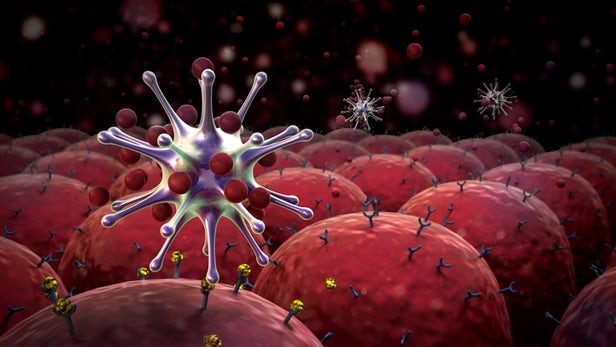By Rich Haridy
Promising early results are in from a phase 1 clinical trial into the safety and efficacy of a new cancer vaccine. The new treatment is designed to stimulate the immune system into attacking certain cancers known to overexpress a specific protein.
One of the more promising cancer biomarkers discovered in recent years has been a protein called HER2. An over-expression of HER2 has been linked to a large volume of breast cancers and is often associated with aggressive tumor growth. While some anti-cancer drugs designed to directly inhibit HER2 are already approved and in use, plenty of research is currently underway to produce an immunotherapy agent that uses the protein as a biomarker to direct the body’s immune system to attack tumors more effectively.
“Immunotherapy marshals the exquisite specificity of the immune system to destroy cancer, and some types may have potentially fewer side effects than traditional chemotherapy,” explains researcher Jay Berzofsky, who is chief of the Vaccine Branch at the Center for Cancer Research, National Cancer Institute.
The new vaccine is customized to each individual patient, with immune cells collected and then modified before being administered back intradermally. The cells derived from each patient are engineered with parts of the HER2 protein combined with an adenovirus so when they are re-administered they hopefully train the immune system to attack the HER2-expressing tumors.
This small early trial was designed to primarily examine safety and efficacy related to a dose escalation scale. Initially, six patients were treated with a low dose of the vaccine, only 5 million dendritic cells per injection. This was then subsequently raised after no clinical benefits were observed. Eleven patients were treated with either 10 million or 20 million cell doses, and over 50 percent displayed positive responses, including one patient with ovarian cancer who had a complete response lasting almost two years.
Importantly, the trial found no adverse toxic reactions to the vaccine other than minor irritation around the injection site. Berzofsky admits this is a very small sample set so conclusions are cautiously optimistic, but this type of result certainly suggests the work can advance to larger trials.
“Based on the current safety and clinical benefit data, the dose of the vaccine was increased to 40 million dendritic cells per injection and the trial opened to patients who have previously been treated with a HER2-targeted therapeutic, including patients with breast cancer,” says Berzofsky. “Moving forward, we would like to investigate whether we can increase the proportion of people who benefit from treatment with the vaccine by combining it with checkpoint inhibitor therapy.”
Another project utilizing a similar HER2-targeting immunotherapy technique was revealed last year by the Mayo Clinic. Unlike this current vaccine strategy, which is somewhat time-consuming because it requires immune cells to be taken from individual patients, modified and returned to the body, the Mayo Clinic technique has engineered sophisticated nanoparticles to do the job. That work is still in proof-of-concept stages but all of these projects demonstrate immunotherapy as an exciting new battleground for the ongoing war against cancer.
The new trial results were presented recently at the Fourth CRI-CIMT-EATI-AACR International Cancer Immunotherapy Conference: Translating Science into Survival, in New York City.
Source: American Association for Cancer Research
This article was published by New Atlas.


